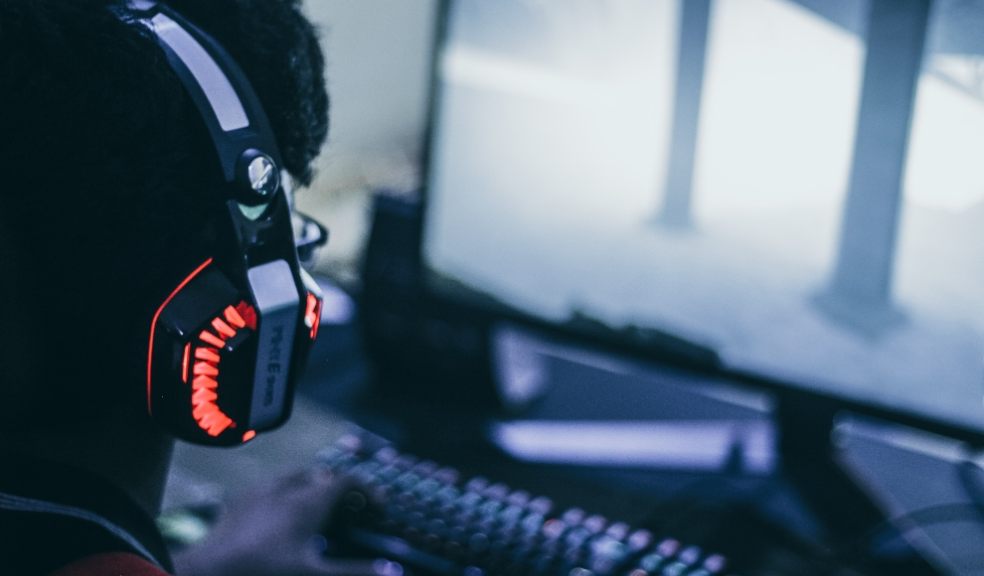
How to protect your children from the effects of screens whilst gaming
Recently, Prince William revealed at the BAFTA headquarters that Prince George likes gaming which he is ‘fascinated’ by but that he and the Duchess of Cambridge are ‘being careful’ about the amount of screen time their three children have.
There’s plenty of evidence suggesting that too much screen time has a negative effect on children’s eyes and can cause vision problems. For children, whose eyes are still developing, there’s an increased concern of short-sightedness (myopia) and blurry vision That’s why eye health specialist and ophthalmologist, Alastair Lockwood at Feel Good Contacts has compiled a list of six things you can do to help protect your children from the effects of screens:
1. Workstation set up
It’s best for your child to be sat comfortably with the computer screen at least an arm’s length from their face. Their neck should be balanced, and not tilted forward or back, while the screen should be slightly below eye level. Make sure your child’s computer workspace is arranged to suit their body size. For children, the recommended distance between the monitor and the eye is 18 to 28 inches to avoid risk of eyestrain. Also, the screen should be a few inches below the child’s eyes. The chair should be adjusted so your child’s arms are parallel with the desk surface and their feet rest comfortably on the floor. These adjustments help avoid posture problems and strained muscles.
2. Blink often
Unconsciously, one does not blink as much as one usually would when staring at a screen, so the eyes aren’t receiving the natural moisture they need to stay hydrated and causes eye strain.
The most common eye-related issue that occurs from extensive digital screen use is dry eye. This short-term problem can be painful and highly uncomfortable, presenting an increased risk of infection and irritation.
The way around this is for children to practice regular blinking during screen use. Looking away from digital devices every now and again and taking some short visual breaks is another way to make sure they’re blinking at a natural rate.
3. 20-20-20
The 20-20-20 rule is very easy to remember, making it a great way for your child to keep their eyes safe during screen use. The rule goes that whenever they’re looking at the screen, every 20 minutes they should take a break for 20 seconds and look at something 20 feet away.
This will give their eyes time to refresh and blink naturally, moisturising their eyes properly and reducing the risk of dry eye.
4. Screen brightness and glare
In darker lighting, a bright, glaring screen can be harsh on eyes. Show your child how to adjust the brightness levels of the screen and encourage them to set it on the lowest setting possible, while still being able to see without constantly exposing their eyes to a strong glare.
In addition, you might want to invest in an anti-glare screen for the computer monitor in your house. These are very affordable and can go a long way to reducing the intensity of the computer brightness on your child’s eyes.
5. Make time for other activities
One way to drastically reduce the effects that digital screens have on your children and their eyes is to encourage them to get involved and start spending more time with other activities. Sports and outdoor play aren’t just good for the exercise they provide, they’re also linked with improving your child’s cognitive skills and hand-eye coordination. Research has shown that children who spend more time away from screens, taking part in sport, playing outside and enjoying other activities tend to be happier, healthier and have a range of more developed skills, mentally, physically and socially.
Try to get your child active in a sport or activity that gets them plenty of fresh air and helps with developing and maintaining their visual acuity. Limit screen-time to a set period.
6. Get plenty of sleep
As with the rest of the body, eyes need time to relax and rest, especially after an extended amount of time watching TV or other digital screens. Children in particular also need sleep for their overall development. Encourage an early night and at least 8 hours of sleep each night.
If followed properly, these steps can work in the long term to keeping your children’s eye health safe from any vision issues caused by the negative effects that digital screen time use can have. Bearing all this in mind, it’s also a smart idea to limit the time your children spends on screens to a reasonable amount.
Finally
Be aware of the signs and symptoms of vision problems, such as eye redness, frequent rubbing of the eyes, head turns and other unusual postures or complaints of blurriness or eye fatigue. Avoidance of the computer or schoolwork may also indicate a vision problem.
If you want to confirm whether your kids eye health is in good condition, it’s best to go for regular eye exams.













